Top 10 Must-See Attractions at Yao Mountain

An Essential Guide to Visiting Yao Mountain
In This Guide
- An Essential Guide to Visiting Yao Mountain
- The Rich History and Legends of Yao Mountain
- Main Highlights: What You Absolutely Can’t Miss
- Planning Your Visit: A Practical Guide
- Tickets: Prices, Booking, and Tips
- How to Get There: A Complete Transportation Guide
- Local Cuisine and Accommodation Nearby
- Frequently Asked Questions
- Final Thoughts on Your Trip
Visiting Yao Mountain is not merely a journey into the heart of nature; it is an invitation to immerse yourself in the rich tapestry of Chinese history and culture. Nestled just 10 kilometers from the vibrant city of Guilin, Yao Mountain (Yao Shan) stands proud as the highest peak in the area, commanding breathtaking views that have captivated travelers for centuries.
As you ascend this majestic mountain, whether by the exhilarating cable lift or a scenic hike along well-trodden paths, you will be rewarded with panoramic vistas of the iconic karst landscape that Guilin is renowned for. The summit, soaring to 909 meters, offers an unparalleled perspective of the surrounding mountains and valleys, making it a must-visit for anyone seeking to experience the essence of this region.
Beyond its stunning views, Yao Mountain is steeped in history. The ancient Yao Temple, built during the Qin Dynasty, whispers tales of the past, while the majestic Golden Guanyin Buddha statue and various shrines at the summit beckon visitors to reflect and connect with the spiritual heritage of this sacred site. Wildlife enthusiasts will also find delight here, as the mountain teems with diverse flora and fauna, including the playful rhesus monkeys that inhabit its slopes.
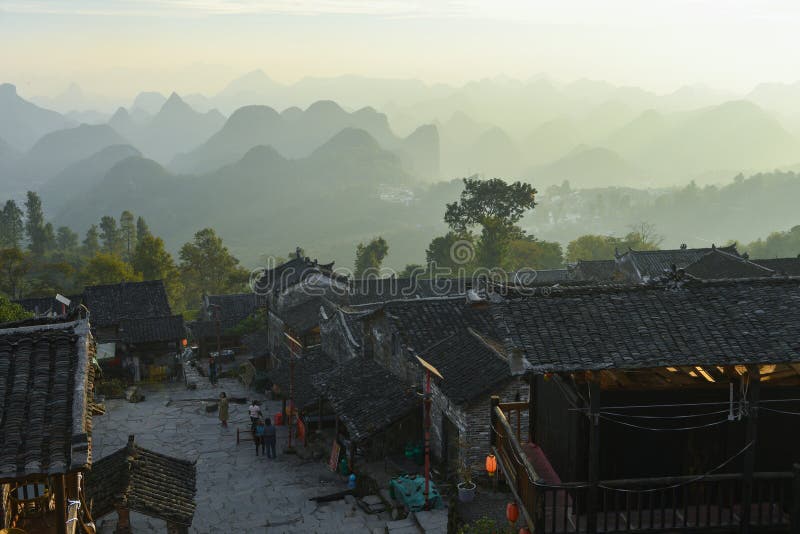
Yao Mountain.
Whether you are an adventurer seeking the thrill of a toboggan run down the mountain or a culture enthusiast eager to explore the local temples and traditional crafts, Yao Mountain promises a multifaceted experience that resonates with the beauty and history of China. Join us as we delve deeper into the essential attractions, travel tips, and unforgettable experiences waiting for you at this iconic landmark.
The Rich History and Legends of Yao Mountain
Nestled in the eastern suburbs of Guilin, Yao Mountain (Yao Shan) stands as a majestic sentinel over the landscape, its heights cloaked in rich history and folklore that beckon travelers to explore its peaks. This natural wonder, which rises to 909 meters, is not only the tallest mountain in the Guilin region but also a site steeped in ancient tales and cultural significance.
Ancient Origins and Historic Significance
Yao Mountain’s name is derived from the Yao Temple, which is believed to have been established during the Qin Dynasty (221–206 BC). This temple commemorates the legendary Emperor Yao, one of China’s revered ancient rulers, known for his virtuous governance and pioneering contributions to agriculture and flood control. The temple, at an altitude of approximately 450 meters, is a testament to the mountain’s historical importance, as it served as a place of worship and reflection for many centuries.
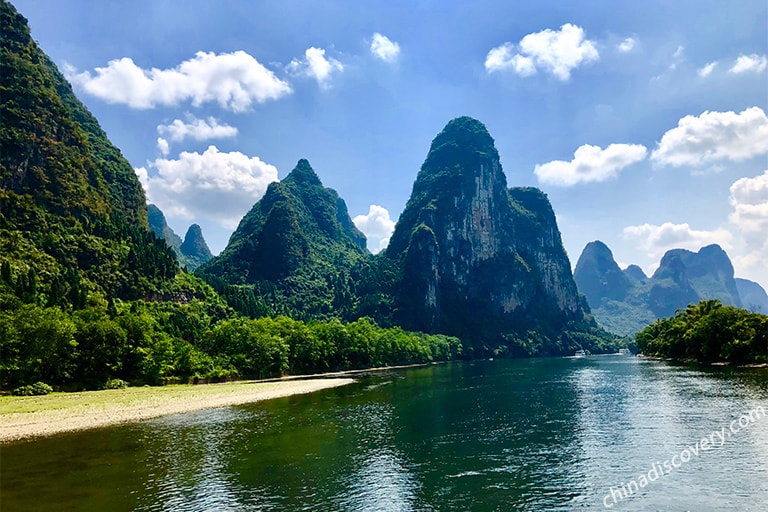
Yao Mountain.
As you ascend the mountain, you will encounter the Bailu Temple, located around 700 meters above sea level. This temple was once the residence of a famous monk during the Tang Dynasty (618–907 AD) and continues to be a site of spiritual significance. The combination of these ancient structures and their compelling histories creates a spiritual tapestry that draws pilgrims and visitors alike.
Legends of Yao Mountain
Yao Mountain is steeped in local legends that further enhance its cultural allure. One popular tale speaks of the mountain as a haven for the deities, where celestial beings would descend to the earth to admire the stunning karst landscape. It is said that the mountain’s unique formations were sculpted by the hands of these divine entities, who molded the earth to create a paradise for themselves.
Another legend tells of Emperor Yao himself, who is said to have ascended the mountain to seek counsel from the heavens. The mountain was believed to be a bridge between the earthly realm and the divine, a sacred space where the emperor could communicate with the gods. This connection to the divine has imbued Yao Mountain with a sense of reverence and mystique that continues to resonate with visitors.

Yao Mountain.
A Cultural Mosaic
The mountain is not merely a natural spectacle; it is also a vibrant hub of cultural activities. At the summit, you will encounter various attractions, including golden statues and shrines that pay homage to the deities of the mountain. Traditional performances featuring ethnic Chinese dancers and musicians enchant visitors, creating an immersive experience that celebrates the rich cultural heritage of the region.
Moreover, the local villagers maintain their customs and traditions, including the vibrant practice of tea ceremonies at the nearby Guilin Tea Science and Research Institute. This cultural intermingling enriches the visitor experience, allowing you to engage with the history and traditions that have thrived in this region for centuries.

Yao Mountain.
A Journey Through Time
Visiting Yao Mountain is not just about the breathtaking views; it is a journey through time, where nature and history converge. Whether you choose to hike the rugged trails or take the scenic cable lift, each step you take is layered with the echoes of the past. The mountain’s unique feng shui has made it a favored site for cemeteries and burial grounds, further intertwining the themes of life, death, and the afterlife in Chinese culture.
Conclusion
Yao Mountain stands as a testament to the enduring legacy of Chinese history, spirituality, and culture. Its ancient temples, rich legends, and vibrant local traditions invite travelers to explore not just the physical landscape but also the profound stories that have shaped this revered site over millennia. For those seeking an authentic experience in China, Yao Mountain is a must-visit destination, promising not only stunning vistas but also a deep connection to the rich tapestry of Chinese heritage.
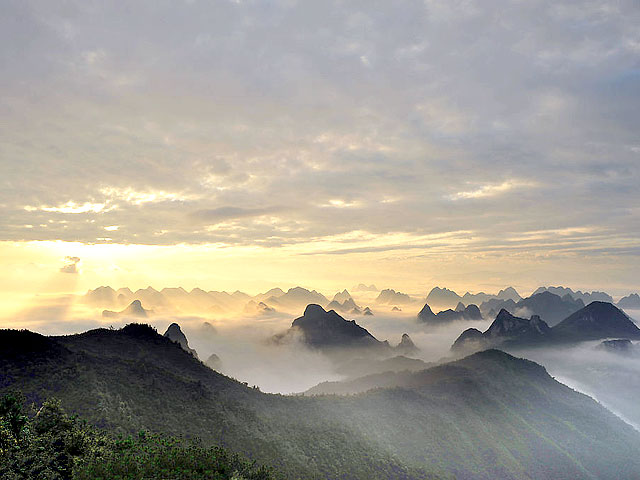
Yao Mountain.
Main Highlights: What You Absolutely Can’t Miss
Discovering the Wonders of Yao Mountain
Yao Mountain, or Yao Shan, stands as a majestic sentinel overlooking Guilin, the jewel of southern China. A visit to this iconic peak is not merely a trek but a journey through breathtaking landscapes, rich history, and vibrant culture. Here’s a guide to the unmissable highlights of Yao Mountain that will enhance your experience and deepen your appreciation for this natural wonder.
1. The Summit Experience
At an impressive height of 909 meters, the main peak of Yao Mountain offers a panoramic view that is nothing short of spectacular. Ascend via the cable lift, which spans 1.4 km and takes about 20 minutes. For those seeking a bit of adventure, the hiking path alongside the lift is a vigorous workout that rewards you with stunning vistas of the surrounding karst formations.
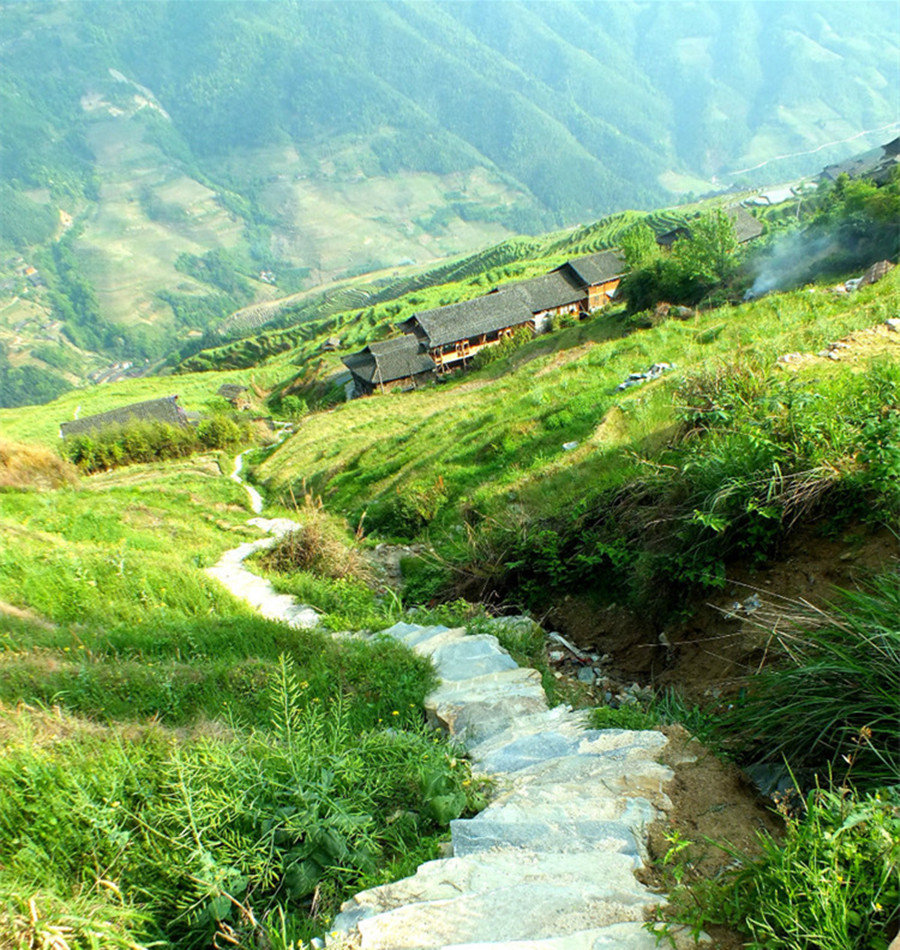
Yao Mountain.
- Tip: Opt for early morning or late afternoon visits to enjoy the golden light illuminating the landscape.
2. Cultural Landmarks
Yao Mountain is steeped in history, featuring several significant temples that reflect its cultural heritage:
- Yao Temple: Located at around 450 meters above sea level, this temple dates back to the Qin Dynasty (221–206 BC) and is the origin of the mountain’s name.
- Bailu Temple: Sitting at approximately 700 meters, this temple was once home to a renowned monk from the Tang Dynasty (618–907).
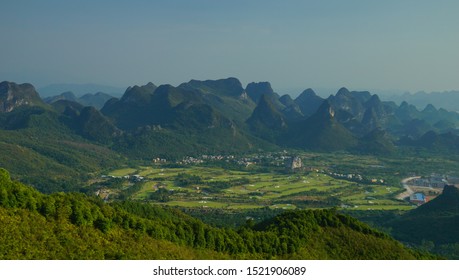
Yao Mountain.
These sacred sites not only offer spiritual insight but also provide picturesque backdrops for photography.
3. Wildlife Encounters
The vibrant ecosystem of Yao Mountain is teeming with life. As you hike or bike along the trails, keep an eye out for exotic butterflies, colorful birds, and the occasional Rhesus monkey. Spring, summer, and autumn are particularly enchanting seasons for wildlife spotting, with an array of wildflowers enhancing the mountain’s beauty.

Yao Mountain.
4. Unique Attractions at the Summit
Once you reach the summit, explore a range of attractions:
- Golden Statues: Admire the stunning golden statues that embellish the peak.
- Viewing Telescope & Sundial: Perfect for capturing the vastness of Guilin’s landscape.
- Cultural Performances: Enjoy traditional Chinese music and dance performances that often take place in the visitor areas, showcasing the rich cultural tapestry of the region.
5. The Toboggan Run
For a thrilling descent, try the toboggan run, a unique experience that allows you to glide down the mountain on a metal chute. This exhilarating ride not only adds a fun element to your visit but also offers glimpses of the lush forests and hidden nooks of the mountain that are otherwise hard to explore.

Yao Mountain.
6. Scenic Routes and Local Experiences
If you prefer to experience Yao Mountain at a slower pace, consider walking or biking up the Mountain Road. This route is dotted with vineyards and scenic spots, including natural spring waterfalls. Rent a bicycle or an electric scooter from the nearby Cold Water Village for an economical and enjoyable journey.
- Entrance Fee: The gate fee is a mere 10 RMB, making it an accessible adventure for all.

Yao Mountain.
7. Nearby Attractions
After your Yao Mountain adventure, don’t miss the opportunity to visit the nearby Guilin Geological Museum and the Guilin Tea Science and Research Institute. Both locations offer fascinating insights into the region’s natural history and tea culture, rounding out your Guilin experience beautifully.
Conclusion
Yao Mountain is a treasure trove of natural beauty, cultural significance, and exhilarating experiences. Whether you are seeking breathtaking views, a touch of history, or a taste of local culture, this magnificent peak promises an unforgettable adventure. Make sure to include Yao Mountain in your Guilin itinerary—you won’t regret it!
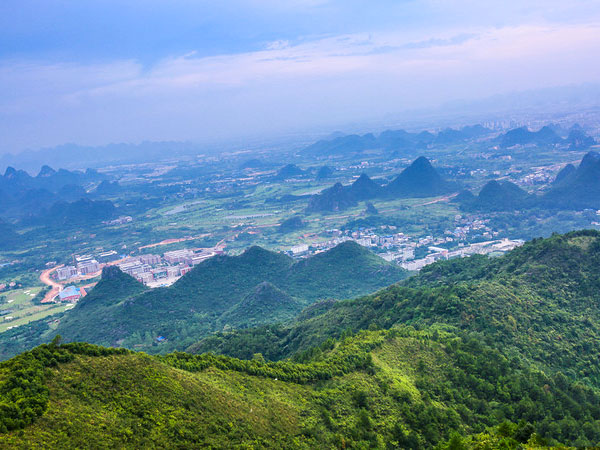
Yao Mountain.
Planning Your Visit: A Practical Guide
Your Essential Guide to Visiting Yao Mountain
Nestled in the picturesque region of Guilin, Yao Mountain (Yao Shan) stands as the tallest and most prominent peak in the area, offering breathtaking views and a wealth of cultural and natural experiences. Whether you’re drawn by the stunning landscapes, ancient temples, or the thrill of outdoor activities, Yao Mountain provides a memorable excursion that delves deep into the heart of Chinese history and culture. Here’s everything you need to know to plan your visit.
Getting There
Yao Mountain is conveniently located just 10 kilometers (6.2 miles) from the center of Guilin, making it easily accessible for travelers.
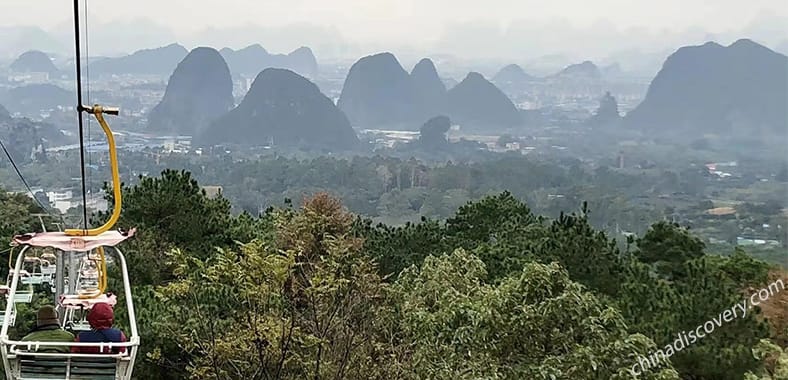
Yao Mountain.
-
By Bus: Take bus numbers 13 or 24 from the city center. The fare is only 2 yuan. Get off at the Tombs of Prince Jingjiang stop, and enjoy a short 10-minute walk to the Yao Mountain cable lift entrance.
-
By Taxi: A taxi from the city center will cost approximately 30 yuan and offers a hassle-free journey.
Admission Fees
- Entrance Fee: Access to the mountain is affordable, with a nominal entrance fee of 10 yuan if you choose to hike or bike up.
- Cable Lift: For those preferring a more leisurely ascent, the cable lift costs 40 yuan one-way or 75 yuan round-trip. The lift ride lasts about 20 minutes and offers stunning views as you ascend the 1.4 km (0.9 miles) cableway.
Exploring Yao Mountain
Yao Mountain is not just about reaching the summit; it’s about the journey and the experiences along the way.
-
Hiking and Biking: If you’re up for it, the hike along the stepped path will take about an hour and offers a thorough cardio workout. Alternatively, you can rent a bicycle or electric scooter from the nearby village of Leng Shui Tang for around 4 yuan per hour, allowing you to explore at a more relaxed pace.
-
Wildlife Encounters: The mountain is home to diverse wildlife, including exotic butterflies, birds, and even rhesus monkeys. Visiting in spring or summer enhances your chances of spotting these creatures amid blooming wildflowers.
Cultural Highlights
At the summit, the elevation of 909 meters reveals not just jaw-dropping views of Guilin’s karst landscape but also fascinating cultural landmarks.
-
Temples: Visit Yao Temple, dating back to the Qin Dynasty (221–206 BC), and Bailu Temple, which served as a monk’s residence during the Tang Dynasty (618–907). These historical sites offer insight into China’s rich spiritual heritage.
-
Summit Attractions: Explore the array of golden statues, a sundial, viewing telescopes, and shrines. The presence of local artisans selling crafts adds to the cultural tapestry of your visit.
Unique Experiences
-
Toboggan Run: For an exhilarating descent, try the toboggan run, which winds down the mountain on a metal chute track. It’s the second-longest of its kind in China and offers a fun way to take in the surrounding forest.
-
Nearby Attractions: Don’t miss the Guilin Geological Museum at the foot of the mountain and the Guilin Tea Science and Research Institute, where you can learn about tea production and enjoy a traditional tea ceremony.
Practical Tips
-
Best Time to Visit: Yao Mountain is beautiful year-round, with each season offering a different experience. Spring and summer bring lush greenery, while autumn showcases vibrant foliage. Winter provides a serene, snow-dusted landscape.
-
What to Bring: Comfortable walking shoes, water, a camera, and perhaps a light jacket, as temperatures can drop at higher altitudes.
-
Open Hours: Yao Mountain is open from 8:30 AM to 6:00 PM, allowing ample time for exploration.
Yao Mountain is a destination that perfectly marries natural beauty with cultural richness, making it a must-visit during your time in Guilin. With this guide in hand, you are well-equipped to embark on an unforgettable adventure!
Tickets: Prices, Booking, and Tips
When planning your visit to Yao Mountain (Yao Shan), understanding the ticketing options and associated costs is essential. This stunning destination, famous for its breathtaking views and rich cultural history, offers several choices for both transportation and entrance fees. Here’s a detailed guide to help you navigate the ticketing process and make the most of your experience.
Entry Fees
- General Entrance Fee:
- 10 RMB (approximately $1.50 USD) for entry to the mountain. This fee is applicable if you choose to hike or bike up the road to the summit.
Transportation Options
Cable Car
- One-way Ticket:
- 40 RMB (approximately $6 USD)
- Round-trip Ticket:
- 75 RMB (approximately $11.50 USD)
- Travel Time: The cable lift travels a distance of 1.4 km (0.9 miles) and takes about 20 minutes to reach the summit.
- Experience: The cable car provides spectacular views of the surrounding karst landscape, making it a popular choice for visitors who prefer a more leisurely ascent.
Hiking/Biking
- Free Access: If you decide to hike or bike to the top, the only fee you’ll incur is the entrance fee at the summit.
- Biking Options: Rental bikes (including electric scooters) are available for hire in the nearby Cold Water Village, starting at about 4 RMB per hour. This is an excellent option if you’re looking for a quicker and more exhilarating journey.
Additional Attractions
Upon reaching the summit, you’ll find several attractions that enhance your visit:
– Golden Statues and Temples: Explore the various shrines and the iconic Golden Guanyin Buddha statue.
– Viewing Telescope: Capture panoramic views of the stunning Guilin landscape.
– Local Stalls: Browse through stalls selling local crafts and souvenirs, offering a taste of the region’s culture.
Tips for Booking and Visiting
- Best Time to Visit: Yao Mountain is beautiful year-round, but spring and autumn provide particularly stunning views with vibrant colors. Early mornings or late afternoons are ideal for avoiding the crowds.
- Weather Considerations: Always check the weather forecast before your visit, as conditions can change rapidly in mountainous areas.
- Public Transport: If you’re traveling from Guilin city, take bus 13 or 24 (only 2 RMB) to the Tombs of Prince Jingjiang stop, followed by a pleasant 10-minute walk to the cable car entrance.
- Taxi Option: Alternatively, a taxi ride from the city center will cost approximately 30 RMB.
Yao Mountain is not just a destination; it’s an experience steeped in history and natural beauty. With affordable entry fees and various transportation options, this captivating landmark is accessible to all travelers looking to immerse themselves in the stunning vistas and rich cultural heritage of Guilin.
How to Get There: A Complete Transportation Guide
Making Your Way to Yao Mountain
Yao Mountain, or Yao Shan, is a breathtaking destination that should not be missed when visiting Guilin. Nestled just 10 kilometers from the city center, it stands as a majestic sentinel over the stunning karst landscape that defines this region of China. Getting to Yao Mountain is straightforward, whether you prefer public transport, a taxi, or even a leisurely bike ride. Here’s how you can reach this iconic site:
Public Transportation
If you’re looking for an affordable option, public buses are a great choice:
- Bus Line 13 or 24: Catching buses 13 or 24 is your best bet. Both lines head east from the city center and stop at the Tombs of Prince Jingjiang. The fare is a mere 2 RMB.
- Boarding Points: You can catch the 24 bus from the first stop on Jiefang East Road, where it crosses Zhongshan Road on the way to Liberation Bridge.
- Final Stop: After disembarking at the Tombs of Prince Jingjiang stop, enjoy a pleasant 10-minute stroll to the Yao Mountain chairlift entrance.
Taxi Services
For those who prefer a more direct route or are traveling in a group, taxis are readily available:
- Taxi Fare: A taxi from the city center to Yao Mountain typically costs around 30 RMB.
- Convenience: Taxis provide a convenient and efficient way to reach the mountain without the need to navigate public transport schedules.
Biking and Walking
For the adventurous spirit, biking or walking offers a unique way to experience the landscape:
- Biking: You can hire a bicycle or an electric scooter from Leng Shui Tang (Cold Water Village) at very reasonable rates (approximately 4 RMB per hour for electric bikes). The bike ride to the top is scenic and refreshing.
- Walking: If you’re up for a challenge, consider hiking to the summit via the mountain road. Many locals make this trek regularly, and it allows for a more intimate experience with the natural beauty surrounding Yao Mountain.
Cable Lift Experience
Once at the base of Yao Mountain, you have the option to ascend via the Yao Shan Cable Lift:
- Ticket Prices: The cable lift costs 40 RMB one-way or 75 RMB for a round trip.
- Journey Time: The ride lasts approximately 20 minutes, offering panoramic views of the lush landscape as you ascend to an altitude of 909 meters.
- Scenic Path: The cable lift stretches 1.4 kilometers and is the first tourist cable-way in Guangxi, making it a must-do experience for visitors.
The Toboggan Run
For a thrilling descent, consider the toboggan run:
- Adventure Down: This exhilarating ride takes you down the mountain on a wheeled toboggan through dense forests, providing a rush of adrenaline and a unique perspective of the landscape.
- Safety: While it’s a fun option, speeds are controlled for safety, ensuring an enjoyable experience for all ages.
Nearby Attractions
While visiting Yao Mountain, consider exploring additional nearby attractions:
- Guilin Geological Museum: Located at the foot of the mountain, this museum showcases a fascinating collection of minerals, rocks, and fossils.
- Guilin Tea Science and Research Institute: Learn about the tea production process and enjoy a traditional tea ceremony along the route to Yao Mountain.
Final Tips
- Timing Your Visit: Aim to visit early in the day to avoid crowds and enjoy the tranquility of the mountain.
- Weather Considerations: Check the weather forecast, as conditions can change rapidly, especially in mountainous areas.
- Entrance Fees: The entrance fee to the mountain area is a modest 10 RMB, allowing you access to various attractions, including temples and shrines.
Embark on your journey to Yao Mountain and immerse yourself in the captivating beauty and rich history that this remarkable site has to offer. Whether you choose to hike, bike, or glide up in the cable lift, the experience promises to be unforgettable.
Local Cuisine and Accommodation Nearby
Exploring the majestic Yao Mountain and its surrounding landscape is not just about breathtaking views and rich history; it also offers a delightful opportunity to indulge in local cuisine and comfortable accommodations nearby. Whether you’re looking to savor authentic dishes or find a cozy place to rest after your adventures, you’ll find plenty of options in this region.
Culinary Delights Near Yao Mountain
When visiting Yao Mountain, you can’t miss the chance to taste some local delicacies. Here are some must-try dishes and restaurants that will give you a true flavor of the region:
-
Guilin Rice Noodles (桂林米粉): A staple in Guilin, these rice noodles are served in a savory broth and come with various toppings. You can find excellent versions at local eateries like Guilin Rice Noodle Restaurant (桂林米粉店) located near the base of Yao Mountain.
-
Beer Fish (啤酒鱼): This famous dish from Yangshuo features fresh fish cooked with local beer, spices, and vegetables. Head to The Beer Fish Restaurant in the nearby village to enjoy this flavorful dish while soaking in the picturesque views.
-
Steam Buns (包子): For a quick snack, try these fluffy buns filled with meat or vegetables. Local Street Vendors around the mountain often serve them hot and fresh, perfect for a quick bite before or after your hike.
-
Guilin Pickled Vegetables (桂林酱菜): These tangy, fermented vegetables are a popular side dish in local meals. Look for them in any local restaurant, and don’t hesitate to ask for recommendations from the staff.
Recommended Accommodations
After a day of exploring the stunning landscapes and historical sites, you’ll want a comfortable place to unwind. Here are some highly rated accommodations near Yao Mountain:
-
Yao Mountain Resort Hotel (尧山度假酒店): Nestled at the foot of Yao Mountain, this hotel offers modern amenities and stunning mountain views. Guests can enjoy access to hiking trails, an on-site restaurant serving local cuisine, and comfortable rooms designed for relaxation.
-
Guilin Park Hotel (桂林公园酒店): Located about 10 kilometers from Yao Mountain, this hotel features elegantly furnished rooms and is known for its friendly service. The on-site dining options include both Western and traditional Chinese dishes, making it a great place to recharge after your adventures.
-
Cold Water Village Homestays (冷水塘民宿): For a more authentic experience, consider staying in a homestay in Leng Shui Tang. Here, you can enjoy traditional meals made from locally sourced ingredients and immerse yourself in the local culture.
-
Li River Hotel (漓江酒店): Situated along the scenic Li River, this hotel offers beautiful views and easy access to both Yao Mountain and other nearby attractions. The hotel features a restaurant that serves a delightful mix of local and international dishes.
Conclusion
Whether you’re savoring the flavors of Guilin’s cuisine or relaxing in charming accommodations, the Yao Mountain area provides a rich tapestry of experiences that enhance your journey through this culturally vibrant region. Enjoy your culinary adventures and the hospitality that makes visiting Yao Mountain truly unforgettable!
Frequently Asked Questions
Frequently Asked Questions about Yao Mountain
1. What is Yao Mountain known for?
Yao Mountain, also known as Yao Shan, is the highest peak near Guilin, renowned for its breathtaking views of the surrounding karst landscape. It features diverse wildlife, ancient temples, and various attractions at the summit, making it a must-visit for anyone exploring the Guilin area.
2. How do I get to Yao Mountain from Guilin city center?
Yao Mountain is approximately 10 kilometers (6.2 miles) from the city center. You can reach it by taking bus numbers 13 or 24 for just 2 yuan. Taxis are also available, costing around 30 yuan. If you prefer a scenic ride, consider cycling or walking along the road leading to the mountain.
3. What are the options for reaching the summit?
You have several options to reach the top of Yao Mountain:
– Cable Car: A scenic ride that takes about 20 minutes (40 RMB one-way, 75 RMB round trip).
– Hiking: A challenging hike up a stepped path, which is great for fitness enthusiasts.
– Biking: Rent a bicycle or electric scooter from the nearby Cold Water Village for a quicker ascent.
4. Are there any entrance fees?
Yes, there is a small entrance fee to access the area at the summit. The fee is 10 RMB, which allows you to explore the various attractions, temples, and enjoy the stunning views.
5. What can I see at the summit?
At the summit, you will find beautiful golden statues, shrines, a viewing telescope, and a sundial, all set against a backdrop of magnificent views over the Guilin landscape. There are also local craft stalls and performances by ethnic Chinese dancers and musicians.
6. What wildlife can I expect to see?
Yao Mountain is home to various wildlife, including exotic butterflies, birds, and even troupes of rhesus monkeys. The best time to observe these creatures is during the spring, summer, and autumn months.
7. Is there anything to do besides hiking and enjoying the views?
Absolutely! You can experience the thrill of a toboggan run that descends the mountain on a metal chute track. Additionally, nearby attractions like the Guilin Geological Museum and the Guilin Tea Science and Research Institute offer fascinating insights into the region’s geology and tea culture.
8. What is the best time of year to visit Yao Mountain?
Yao Mountain is beautiful year-round. Spring and summer showcase lush greenery and vibrant wildflowers, while autumn offers stunning red foliage. Winter, with its frosty landscape, also presents a unique charm. Each season provides a different perspective of the mountain’s beauty, so choose based on your preference for scenery.
Final Thoughts on Your Trip
As you conclude your journey at Yao Mountain, it’s essential to reflect upon the myriad experiences that unfold against its breathtaking backdrop. This majestic peak, standing at 909 meters, is not merely a geographical landmark but a vibrant tapestry woven with history, culture, and natural beauty.
A Tapestry of Experiences
From the exhilarating ascent—whether via the scenic chairlift or the invigorating hike—to the panoramic vistas that greet you at the summit, every moment spent here is a celebration of Guilin’s unique karst landscape. The Golden Guanyin Buddha Statue and ancient temples, such as Yao Temple and Bailu Temple, serve as poignant reminders of China’s rich spiritual heritage, inviting contemplation and appreciation of the past.
Nature’s Masterpiece
The seasons breathe life into Yao Mountain, transforming it into a canvas of colors and textures. Spring and summer usher in vibrant wildflowers and fluttering butterflies, while autumn adorns the landscape with a riot of red and gold leaves. Winter, with its serene snowscapes, offers a tranquil contrast. Each season invites you to explore the diverse wildlife, including the elusive rhesus monkeys that add a touch of whimsy to your adventure.
Thrilling Adventures Await
Don’t miss the thrilling descent via the toboggan run, which is not just an exhilarating ride but also a unique way to immerse yourself in the mountain’s lush surroundings. It’s a fitting finale to a day filled with exploration and wonder.
Beyond Yao Mountain
As you prepare to leave, consider the nearby attractions that complement your visit. The Guilin Geological Museum and the Guilin Tea Science and Research Institute offer engaging insights into the region’s natural and cultural heritage.
Final Reflections
Yao Mountain is more than just a destination; it is a journey through time and nature. Whether you came for the history, the stunning views, or the sense of adventure, this iconic site leaves an indelible mark on the soul. As you descend and carry the memories with you, remember that every peak climbed brings a new perspective—one that inspires further exploration of the rich culture and history that China has to offer.
Safe travels, and may your adventures continue to be filled with discovery and joy!